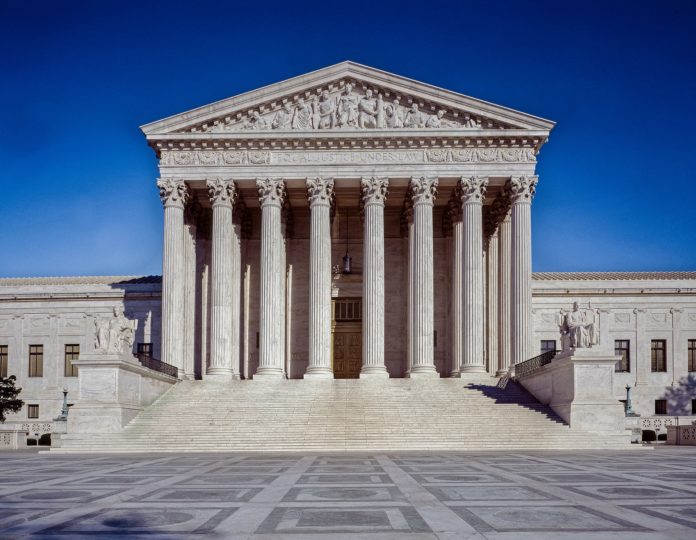
The U.S. Supreme Court on Thursday decided to stay a controversial vaccine-or-test rule for large private employers while allowing a vaccine mandate for health care workers to move forward.
In a 6-3 decision, the court agreed to a stay of the Occupational Safety and Health Administration’s emergency temporary standard because opponents of the rule “are likely to prevail” in their challenge to the ETS.
The ETS requires private employers with more than 100 employees to ensure their employees are fully vaccinated or require workers to produce a negative test on a weekly basis. Shortly after the rule was announced in early November, businesses, trade groups and about two dozen states sued to stop the mandate, arguing OSHA exceeded its authority when it issued the ETS.
For more than two months, the status of the ETS has been at the center of a game of ping pong between different appellate courts. In early November, the 5th Circuit Court of Appeals stayed the rule. Later that month, the Ohio-based 6th Circuit Court of Appeals was chosen — fittingly, in a ping-long lottery — to hear the consolidated litigation over the ETS. The conservative-leaning court surprised many on Dec. 17 when it decided to lift the stay.
The mandate’s challengers responded by asking the Supreme Court to stay the rule while the 6th Circuit reviews the merits of the ETS lawsuits. On Jan. 7, the Supreme Court heard arguments on whether to block the rule, but the court failed to issue an opinion before Jan. 10, the compliance deadline for most of the mandate’s provisions, and the ETS briefly went into effect.
In a per curiam opinion, the Supreme Court majority wrote that OSHA is limited to regulating work-related danger, and contracting COVID-19 doesn’t qualify as a work-related danger. “Although COVID-19 is a risk that occurs in many workplaces, it is not an occupational hazard in most,” the majority — Justices John Roberts, Clarence Thomas, Samuel Alito, Neil Gorsuch, Brett Kavanaugh and Amy Coney Barrett — wrote.
“Permitting OSHA to regulate the hazards of daily life — simply because most Americans have jobs and face those same risks while on the clock — would significantly expand OSHA’s regulatory authority without clear congressional authorization,” the opinion states.
However, the court did not block a separate mandate requiring employees at federally funded health care facilities to be vaccinated against COVID-19. The Centers for Medicare and Medicaid Services mandate, also announced in November, covers 17 million health care workers at 76,000 facilities. The CMS rule was temporarily blocked by two federal district courts in late November.
In a 5-4 decision, the Supreme Court found that U.S. Secretary of Health and Human Services Xavier Becerra did not exceed his authority when he imposed the rule, which requires staff at facilities that receive Medicare and Medicaid funds to be fully vaccinated.
“After all, ensuring that providers take steps to avoid transmitting a dangerous virus to their patients is consistent with the fundamental principle of the medical profession: first, do no harm,” wrote the majority, which consisted of Justices Kavanaugh, Roberts, Sonia Sotomayor, Elena Kagan and Stephen Bryer.
The majority also noted that the secretary “routinely imposes conditions of participation that relate to the qualifications and duties of healthcare workers themselves,” and he has the authority to require hospital employees to wear gloves, sterilize instruments and implement other infection control measures.
“Of course the vaccine mandate goes further than what the Secretary has done in the past to implement infection control. But he has never had to address an infection problem of this scale and scope before,” the majority opinion states. “In any event, there can be no doubt that addressing infection problems in Medicare and Medicaid facilities is what he does.”

